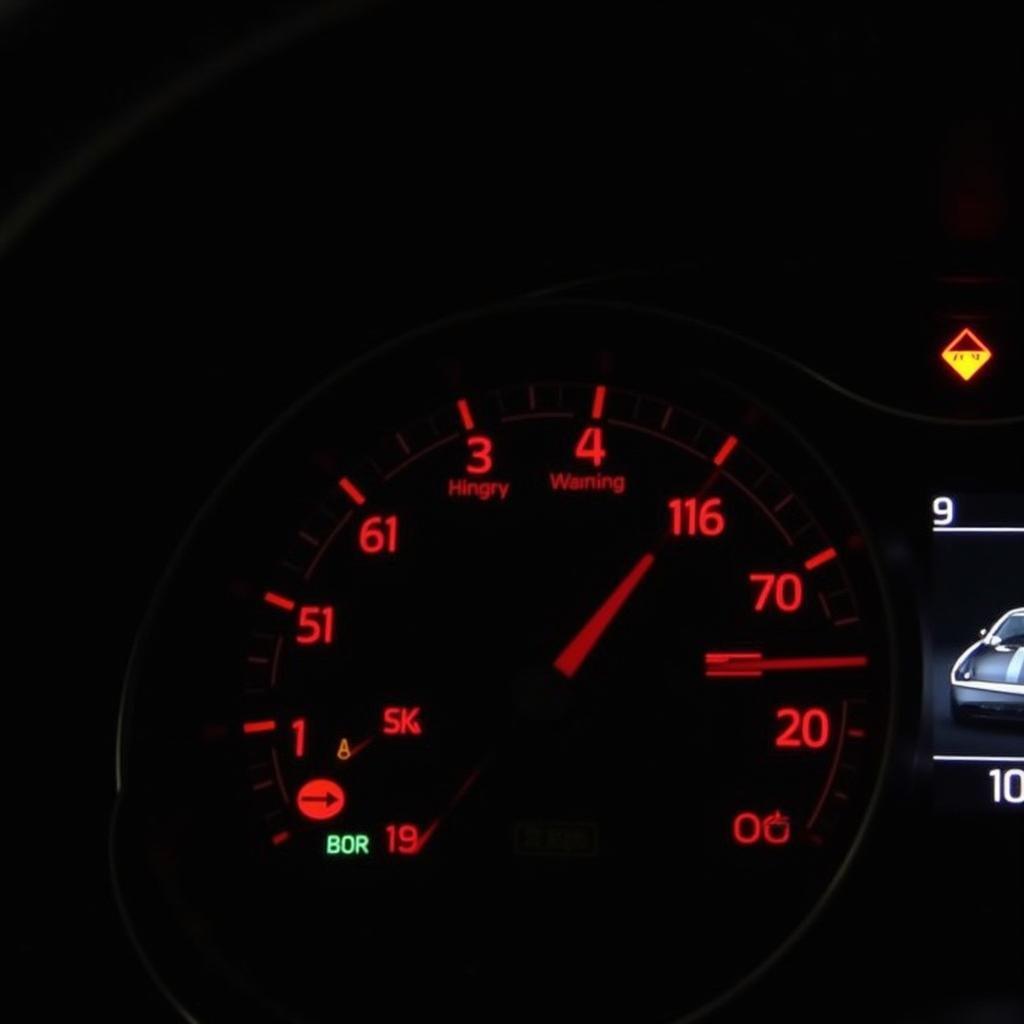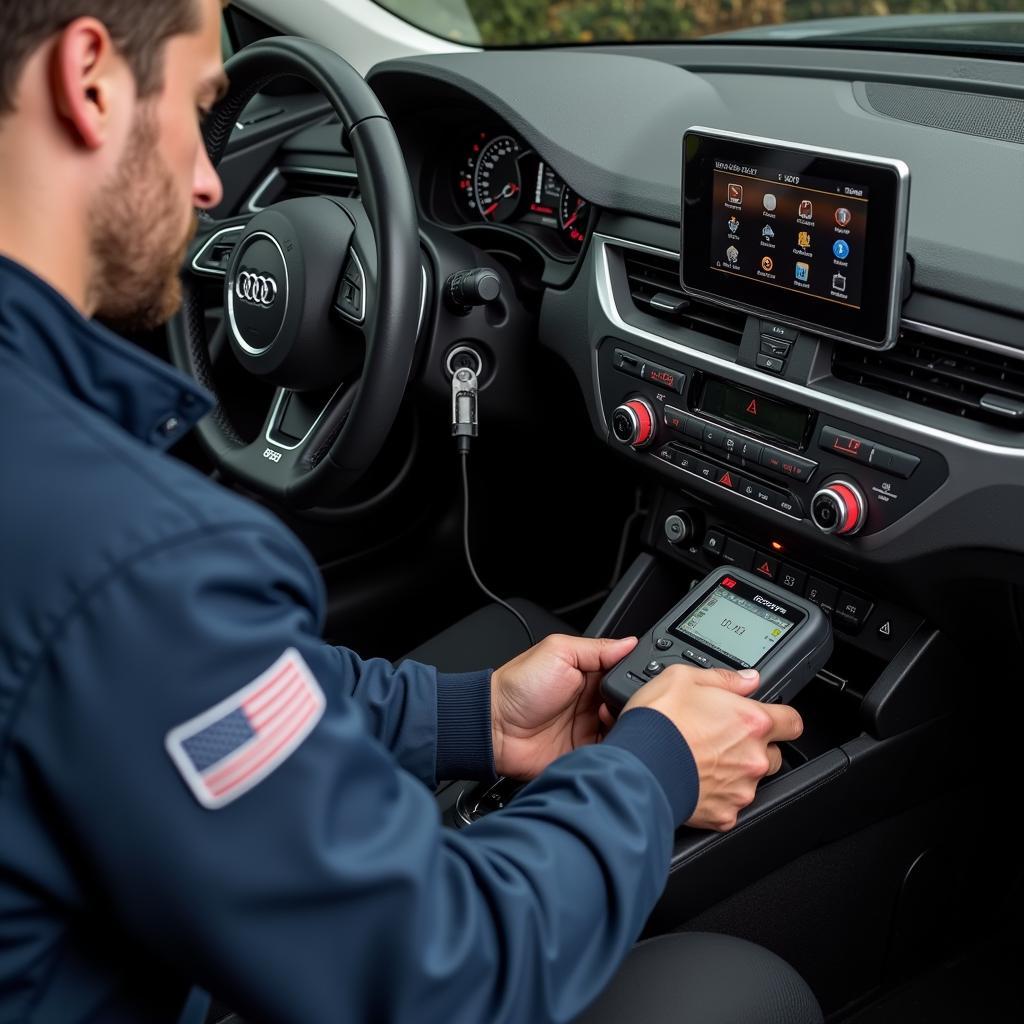Your cart is currently empty!

Decoding Your Audi Q3: A Comprehensive Guide to VCDS Codes
Owning an Audi Q3 is a thrilling experience, but encountering warning lights and cryptic error messages can quickly dampen the excitement. Understanding these codes is essential for efficient troubleshooting and repairs. This guide will equip you with the knowledge to interpret common Audi Q3 VCDS codes.
What are VCDS Codes and Why Should I Care?
VCDS, which stands for “VAG-COM Diagnostic System,” is a powerful software used to diagnose and troubleshoot issues in Volkswagen Audi Group (VAG) vehicles, including your Audi Q3. When your Q3 experiences a problem, it logs a specific code in its onboard computer system. These codes, referred to as VCDS codes, pinpoint the malfunctioning component or system.
Imagine VCDS codes as your car’s way of communicating what’s wrong. Instead of speaking in riddles, it uses these codes to provide specific clues. By accessing and understanding these codes, you gain valuable insight into your Q3’s health, allowing you to address issues proactively and avoid potential breakdowns.
Essential Tools for Accessing VCDS Codes
Before diving into the world of VCDS codes, you’ll need the right tools for the job:
- VCDS Software: This software, available for purchase online, acts as the interface between your computer and your Q3’s onboard computer.
- Diagnostic Interface Cable: This cable connects your computer to your Q3’s OBD-II port, typically located under the dashboard on the driver’s side.
Once you have these tools, you can connect to your Q3, retrieve the stored codes, and begin deciphering their meaning.
Common Audi Q3 VCDS Codes and Their Meanings
Here’s a breakdown of some frequently encountered VCDS codes in Audi Q3 models, along with their potential causes and solutions:
Engine:
- P0300 – Random/Multiple Cylinder Misfire Detected: This code signals a general misfire issue that could stem from faulty spark plugs, ignition coils, fuel injectors, or even a vacuum leak.
- P0171 – System Too Lean (Bank 1): Indicates that the engine is running lean, meaning there’s too much air compared to fuel. Possible culprits include a vacuum leak, faulty oxygen sensor, or fuel pressure issue.
- P0420 – Catalyst System Efficiency Below Threshold (Bank 1): This code points to a problem with the catalytic converter, often caused by a failing oxygen sensor or a rich fuel mixture.
Transmission:
- P072C – Start/Stop Function, Plausibility: This code relates to issues with the Q3’s start-stop system, which automatically shuts off the engine when the vehicle is stationary.
- P0730 – Incorrect Gear Ratio: Suggests a problem within the transmission itself, potentially a faulty solenoid, clutch pack, or even internal damage.
Brakes:
- U0132 – Lost Communication with Steering Angle Sensor Module: This code signals a communication breakdown between the steering angle sensor and other control modules, impacting stability control and ABS functionality.
 Audi Q3 Dashboard Warning Lights
Audi Q3 Dashboard Warning Lights
Troubleshooting VCDS Codes: A Step-by-Step Approach
- Read the Codes: Connect your VCDS software and interface cable to your Q3’s OBD-II port. Initiate a scan to retrieve the stored codes.
- Research the Codes: Note down all retrieved codes and research their meaning online or in a reliable VCDS code database.
- Prioritize the Codes: Address the codes that directly relate to the symptoms you’re experiencing.
- Inspect and Test: Based on your research, visually inspect the suspected components and perform relevant tests (e.g., checking for vacuum leaks, testing sensor readings)
- Clear the Codes: After addressing the issues, clear the codes using your VCDS software. If the codes reappear, further investigation is necessary.
Expert Insight:
“When diagnosing VCDS codes, it’s crucial to consider the context,” says automotive engineer Mark Stevenson. “A single code might have multiple interpretations depending on other codes present and the vehicle’s symptoms.”
Frequently Asked Questions about Audi Q3 VCDS Codes
Q: Can I drive my Q3 with a VCDS code present?
A: While some codes might allow for temporary driving, it’s crucial to address them promptly. Ignoring codes could lead to more severe problems.
Q: Do all VCDS codes require professional attention?
A: Some codes, like those indicating low tire pressure, might have simple solutions. However, codes related to critical systems often necessitate professional expertise.
Q: Can I prevent VCDS codes from appearing?
A: Regular maintenance, including timely oil changes, spark plug replacements, and inspections, can significantly reduce the likelihood of encountering VCDS codes.
 Mechanic Using VCDS Scanner on Audi Q3
Mechanic Using VCDS Scanner on Audi Q3
Conclusion
Mastering the art of interpreting Audi Q3 VCDS codes empowers you to become a more informed car owner. By understanding these digital whispers, you can proactively address potential issues, ensuring your Q3 continues to deliver a smooth and enjoyable driving experience.
Need assistance interpreting codes or troubleshooting a tricky issue? Don’t hesitate to reach out to our team of experts at +1 (641) 206-8880 and our email address: vcdstool@gmail.com or visit our office at 6719 W 70th Ave, Arvada, CO 80003, USA. We’re here to help keep your Audi Q3 running at its best.
by
Tags:
Leave a Reply